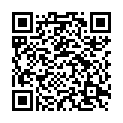|
|
|
| Module code: E2302 |
|
|
2V+2P (4 hours per week) |
|
5 |
| Semester: 3 |
| Mandatory course: yes |
Language of instruction:
German |
Assessment:
Written exam, practical examination with report (lab, ungraded)
[updated 08.01.2020]
|
E2302 (P211-0110, P211-0111) Electrical Engineering and Information Technology, Bachelor, ASPO 01.10.2018
, semester 3, mandatory course, technical
|
60 class hours (= 45 clock hours) over a 15-week period.
The total student study time is 150 hours (equivalent to 5 ECTS credits).
There are therefore 105 hours available for class preparation and follow-up work and exam preparation.
|
Recommended prerequisites (modules):
None.
|
Recommended as prerequisite for:
E2408 CAD in Microelectronics
[updated 05.02.2021]
|
Module coordinator:
Prof. Dr. Oliver Scholz |
Lecturer: Prof. Dr. Oliver Scholz
[updated 10.09.2018]
|
Learning outcomes:
After successfully completing this course, students will be: - able to calculate the root-mean-square value of any time-dependent quantity, - able to determine undulating currents and voltages from the separate measurement of zero frequency and periodic quantities, - familiar with the definitions for mean value, rectified value, root-mean-square value, form factor and peak factor and be able to explain their meaning. - able to identify the problems that can arise from the use of certain measuring elements/instruments in connection with the measurement of time-varying electrical quantities and take them into account in measurements, - able to calculate field and performance quantities in the pseudo-units Bel, Decibel and Neper forward and backward, - able to calculate with quantities in the above-mentioned pseudo-units,
- able to outline the basic structure of a spectrum analyzer and outline the significance of its individual components, - able use the basic functions of a spectrum analyzer, including the appropriate selection and adjustment of e.g. the center frequency and frequency range, the vertical resolution, the resolution bandwidth, the discriminator, the video bandwidth, - able to safely use instrument transformers for current and voltage measurements and quantify their measurement errors, - able to measure or calculate unknown AC resistances using various AC bridges and/or oscilloscopes, - able to calculate loss factors and qualities of alternating current resistances and identify them by way of measurement, - able to explain how modern LCR meters work, - able to to determine the mutual inductance of two coupled coils by measurement, - able to carry out power measurements (apparent, reactive and active power) in a single- and three-phase system (with or without neutral conductor), - able to calculate the power in corresponding single-phase and three-phase networks, - able to describe how a Ferraris meter works, - able to name, compare and roughly evaluate common methods of temperature measurement and their mode of operation to ascertain which method is suitable for a specific purpose, - able to measure static magnetic fields using a field coil and integrator (strength and direction), - able to use acceleration sensors to measure inclination and rotational speed, - able to calibrate sensors, - able to interpret their measurement results and explain the corresponding calculations. - able to independently plan, organize and carry out measurement tasks in small groups, - able to operate more complex measuring equipment,
[updated 08.01.2020]
|
Module content:
- Time-varying signals - Measurement of electrical quantities (alternating and mixed current) such as impedances, power, electrical work and associated measuring instrument technology - Level calculation, - The function and application of a spectrum analyzer, - Extended measuring circuits, such as the Maxwell-Wien bridge, etc. - Instrument transformers - Measuring temperatures
[updated 08.01.2020]
|
Teaching methods/Media:
Slides, lab guides, exercises and videos; all materials can be accessed electronically by students. The module combines lecture and lab components. The lab component consists of 5 compulsory sessions. Experiments will be carried out in groups of two, preparation for the lab sessions will be checked individually. A report must be written for each of the lab experiments. These reports must be personally presented to the lecturer/supervisor. In the lab sessions, students will carry out various measuring tasks on real objects and devices without demonstration, but according to instructions. A supervisor will be available to assist them, if needed.
[updated 08.01.2020]
|
Recommended or required reading:
Felderhoff, Rainer; Freyer, Ulrich: Elektrische und elektronische Messtechnik, Hanser, München, Wien, 2007, 8. Aufl. Harten, Ulrich: Physik - eine Einführung für Ingenieure und Naturwissenschaftler, Springer Vieweg, Berlin Hoffmann, Jörg: Taschenbuch der Messtechnik, Hanser, (latest edition) Irrgang, Klaus: Zur Temperaturmessung elektrischer Berührungsthermometer, Wiss.-Verl. Ilmenau, Ilmenau, 2005, ISBN 3-936404-08-9 Lerch, Reinhardt: Elektrische Messtechnik, Springer, (latest edition) Lüke, Hans-Dieter; Ohm, Jens-Rainer: Signalübertragung - Grundlagen der digitalen und analogen Nachrichtenübertragungssysteme, Springer, (latest edition) Mühl, Thomas: Einführung in die elektrische Messtechnik, Teubner, (latest edition) Schrüfer, Elmar: Elektrische Messtechnik, Hanser, (latest edition)
[updated 08.01.2020]
|


